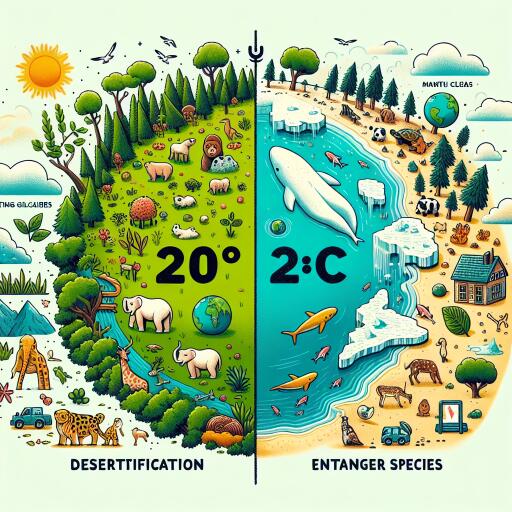
20°C – The Sweet Spot for Earth’s Biodiversity: Navigating a Warming Planet
The pursuit of understanding the optimal conditions for life on Earth reveals profound insights into the resilience and vulnerability of our planet’s biodiversity. At the heart of this exploration lies the intriguing discovery that 20°C may just be the magic number facilitating the rich tapestry of life, from the smallest microbes to the mightiest mammals. But as our globe warms, the equilibrium at this ideal temperature faces unprecedented threats.
In comprehensive analyses spanning various species and ecosystems, a pattern emerges, illustrating that the comfort zone for a vast array of life forms converges around the 20°C mark. This temperature not only supports a diversity of marine, terrestrial, and aerial species but also maximizes the efficiency of their biological processes. Deviations from this thermal sweet spot have profound implications, not all of which are fully understood.
Research indicates an asymmetric bell-curve relationship between temperature and bioactivity across species. Processes escalate with warmth until peaking at around 20°C, beyond which they dramatically decline. Interestingly, marine biodiversity exhibits dips at the equator contrary to expectations, favoring the subtropics where conditions hover near this optimal temperature. Such patterns have become more pronounced with the recent global ocean warming.
The phenomenon extends beyond marine life. Studies in Tasmania, for instance, confirm that both microbial and multicellular organisms thrive most at 20°C, a stability substantiated by the examination of biological molecules. This concurrence of optimal conditions across different life forms sparks curiosity about the underlying mechanisms that favor this particular temperature.
The insights gathered from a broad spectrum of biological research, including the work by an international team spanning from Canada to Taiwan, reaffirm the central role of 20°C in sustaining biodiversity. This isn’t limited to current ecosystems but is echoed in the fossil record, which shows decreased extinctions at this pivotal temperature. It seems that while adaptation allows species to survive beyond their prime thermal niche, a significant concentration of life forms finds a haven at or around 20°C.
The theoretical framework known as the Corkrey model aligns with these observations. It posits that the optimal breadth of thermal tolerance and the peak of biological efficiency coincide at this temperature, potentially explaining the pronounced diversity of life it supports.
But what does this mean in the face of climate change? The centrality of 20°C suggests a delicate balance. As temperatures climb, the potential for tropical species to adapt is undermined, challenging the resilience of ecosystems that have flourished around this thermal midpoint. While marine species may find sanctuary by migrating to cooler waters, terrestrial species face barriers, hemmed in by urban and agricultural landscapes that impede their movement.
Understanding the “20°C effect” offers crucial insights into the dynamics of biodiversity in response to temperature variations. It underscores the intricate relationship between life and its environment, hinting at both a historical legacy of adaptation and a future of uncertainty as ecosystems strive to recalibrate in a warming world.
The implications of surpassing this biological comfort zone are vast, influencing species richness, genetic diversity, and the fundamental processes that underpin life on Earth. The molecular and cellular underpinnings of why 20°C stands as a threshold of efficiency remain a fascinating area for further exploration. It is proposed that the properties of water at the cellular level may offer clues, setting a biological upper limit that most species cannot surpass.
As the globe warms, the insights gained from recognizing the significance of the 20°C benchmark could be pivotal. They offer a lens through which to view the complex tapestry of life, providing a scientific foundation for the conservation efforts aimed at preserving Earth’s biodiversity. The journey towards understanding and protecting the delicate equilibrium that has allowed life to flourish underlines the urgency of addressing climate change, ensuring that Earth remains a nurturing home for all its inhabitants.
In the broader context of ecological research and conservation strategies, the recognition of the 20°C sweet spot enriches our understanding of biodiversity’s intricate dance with temperature. It opens avenues for future research and policy development aimed at safeguarding our planet’s ecological balance. As we navigate these changing times, awareness of these fundamental biological truths will be crucial in steering the stewardship of our natural world towards a sustainable future.





Leave a Reply